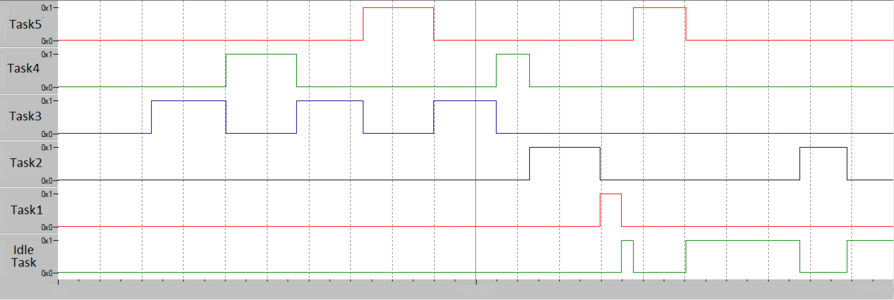Difference between revisions of "6. Use of vTaskSuspend() and vTaskResume() functions"
(Created page with "category: RTOS Tutorials Amruta (talk) 12:33, 17 April 2015 (IST) ---- ==Intro== In last tutorial we saw, scheduling depending upon ta...") |
m |
||
| (7 intermediate revisions by the same user not shown) | |||
| Line 9: | Line 9: | ||
==Code== | ==Code== | ||
| + | You can find [[More examples on vTaskSuspend() and vTaskResume() functions]]. | ||
<html><script src="https://gist.github.com/Amritach/fa260b54fdc2f2b8df9d.js"></script></html> | <html><script src="https://gist.github.com/Amritach/fa260b54fdc2f2b8df9d.js"></script></html> | ||
| + | |||
| + | ==Output== | ||
| + | |||
| + | ====Waveform==== | ||
| + | [[File:RTOS 07 logicAnalyzer.png|x300px|framed|center|Waveform]] | ||
| + | |||
{{DISQUS}} | {{DISQUS}} | ||
Latest revision as of 11:43, 27 May 2015
Amruta (talk) 12:33, 17 April 2015 (IST)
Contents
Intro
In last tutorial we saw, scheduling depending upon task priorities. In this tutorial we will also see how task suspend and resume functions affects scheduling.
The vTaskSuspend() and vTaskResume() functions are used to move and remove a task to and from suspended state. You can check RTOS Basics : TASK tutorial to know more about this.
Code
You can find More examples on vTaskSuspend() and vTaskResume() functions.
Output
Waveform

